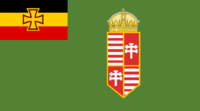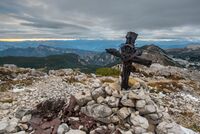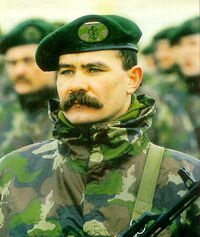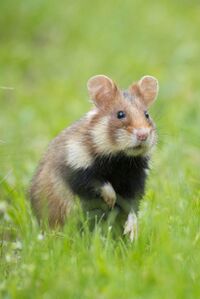Lyonheimer: Difference between revisions
Lyooonheimer (talk | contribs) No edit summary |
Lyooonheimer (talk | contribs) No edit summary |
||
| Line 95: | Line 95: | ||
The first proper civilization in the land now known Lyonheimer was in the late 9th century, where nomads from [[Kingdom of Blechingia|Blechingia]] who were led to the land by Lord [[Alfred Heimer]], a proud leader. The man claimed the land for [[Kingdom of Blechingia|Blechingia]] and it remained that for 700 years. He lead his followers and began construction on what is now [[Judapest]], which they called Geraldia. The city began as simple huts each of the followers had constructed but became bigger over time as many wanderers ended up settling there and the original followers had children. At the time, Lyonheimer was called Eastern Blekinge, as the land belonged [[Kingdom of Blechingia|Blechingia]]. | The first proper civilization in the land now known Lyonheimer was in the late 9th century, where nomads from [[Kingdom of Blechingia|Blechingia]] who were led to the land by Lord [[Alfred Heimer]], a proud leader. The man claimed the land for [[Kingdom of Blechingia|Blechingia]] and it remained that for 700 years. He lead his followers and began construction on what is now [[Judapest]], which they called Geraldia. The city began as simple huts each of the followers had constructed but became bigger over time as many wanderers ended up settling there and the original followers had children. At the time, Lyonheimer was called Eastern Blekinge, as the land belonged [[Kingdom of Blechingia|Blechingia]]. | ||
[[File:Domenico Quaglio Der Dom zu Wetzlar 182022.jpg|200px|thumb|left|Saint Heimer's Cathedral]] [[Alfred Heimer]]'s project at the time was to build a cathedral, this would be the center-piece of the city. He spent 15 years building the cathedral, as he was an extremely religious man who believed that, if he built it on his own, he would be accepted into heaven. The church was built out of the limestone in the area, which the place had a lot of. After the 15 year build progress, he completed the cathedral, which stands to this day as one of the landmarks of Lyonheimer.He became more important following his death, where he became a Saint and eventually became part of the name for the modern nation. | [[File:Domenico Quaglio Der Dom zu Wetzlar 182022.jpg|200px|thumb|left|Saint Heimer's Cathedral]] [[Alfred Heimer]]'s project at the time was to build a cathedral, this would be the center-piece of the city. He spent 15 years building the cathedral, as he was an extremely religious man who believed that, if he built it on his own, he would be accepted into heaven. The church was built out of the limestone in the area, which the place had a lot of. After the 15 year build progress, he completed the cathedral, which stands to this day as one of the landmarks of Lyonheimer. He became more important following his death, where he became a Saint and eventually became part of the name for the modern nation. | ||
| Line 102: | Line 102: | ||
===Dark Ages=== | ===Dark Ages=== | ||
[[File:IPP1strt.jpg|200px|thumb|left|13th Century Drawing of the Plague]]The Dark Ages started at the same time period as the rest of the Kingdom of | [[File:IPP1strt.jpg|200px|thumb|left|13th Century Drawing of the Plague]]The Dark Ages started at the same time period as the rest of the [[Kingdom of Blechingia]]'s Dark Age in the 1400s, and ending a bit after theirs in the 1600s. It started with very unfortunate circumstances, the [[Heratic Plague]] spread through Eastern Blekinge, starting in hamlets, villages, farms and towns but advancing to Judapest, the only city at the time. It began to spread like wildfire within the nation. At the time, Jarls of the regions ruled with mostly an iron fist, with no problem executing anyone who gets in the way. | ||
Symptoms of the [[Heratic Plague]] include, itchy skin, rashes, vomiting and extreme stomach ache. After around three days the virus would have killed a majority of the people who got it. The virus became a real problem in the city, because of the close quarters housing it was a real problem. The virus lasted for around a hundred years killing almost half of the countries populations and to this day is one of the worst plagues Anteria has seen. This gave this time-period the name 'The Dark Ages'... | Symptoms of the [[Heratic Plague]] include, itchy skin, rashes, vomiting and extreme stomach ache. After around three days the virus would have killed a majority of the people who got it. The virus became a real problem in the city, because of the close quarters housing it was a real problem. The virus lasted for around a hundred years killing almost half of the countries populations and to this day is one of the worst plagues Anteria has seen. This gave this time-period the name 'The Dark Ages'... | ||
Revision as of 22:31, 6 March 2021
Lyonheimer Lyonheimeries
Other:
| |||||||||||
|---|---|---|---|---|---|---|---|---|---|---|---|
| Motto: "Deo Pro Patria" "Hope and Victory" | |||||||||||
| Anthem: "Ode to Lyonheimer" | |||||||||||
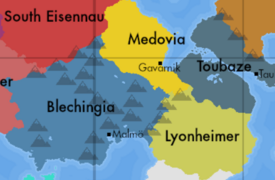 | |||||||||||
| Capital and largest city | Judapest | ||||||||||
| Working languages | Hungarian Lyonheimerish | ||||||||||
| Recognized Regional Languages |
| ||||||||||
| Ethnic groups | Uralic, Nordic, Germanic | ||||||||||
| Demonym(s) | Lyonheimerman | ||||||||||
| Government | Parliamentary Representative Republic | ||||||||||
• Prime-Minister | Horvath Szbolazai | ||||||||||
| Legislature | The Lyonheimmer Second Parliament. | ||||||||||
| Establishment | |||||||||||
• Naeanderthal tribes | ≈3000-1000BC | ||||||||||
• East Blenkinge | 1000-1905 | ||||||||||
• Krenyan-Lyonheimer | 1905-1911 | ||||||||||
• Kingdom and Republic of Lyonheimer | 1962-Present | ||||||||||
| Area | |||||||||||
• Total | 505,498 km2 (195,174 sq mi) | ||||||||||
| Population | |||||||||||
• 2021 estimate | 28,712,900 | ||||||||||
• 2014 census | 28,211,100 | ||||||||||
| Currency | Lyonheimerish Fornit (FOR) | ||||||||||
| Time zone | UTC -1 | ||||||||||
| Date format | dd-mm-yyyy | ||||||||||
| Driving side | right | ||||||||||
| Calling code | +36 | ||||||||||
| ISO 3166 code | LYO | ||||||||||
| Internet TLD | .LY | ||||||||||
Lyonheimer, or officially known as the Kingdom of Lyonheimer, is a monarchy in southern Thrismari, a continent on Anteria. It borders Toubaze to the north, the Kingdom of Blechingia and Medovia to the north west and to the far south is Cult of Valerius. With around 28 million inhabitants, Lyonheimer is a medium sized centrist kingdom. The official language spoken in the nation is Lyonheimerish, however only an estimated 200,000 people even know how to speak the language and most speak Hungarian. The nation is Uralic. Lyonheimer's capital, and largest city is Judapest. Some other urban areas include Juva, Recs and Pyor. The current leaders of the nation are acting Prime-Minister Horvath Szbolazai, and the Head of State is King Faveskas Orbán. The country scales at 505,498km2 and the highest point is 5,281m (Mount Versaves) . Lyonheimer uses the Lyonheimerish Fornit as the currency in the nation. Lyonheimer was called the Krenyan-Lyonheimer empire for around 6 years from the mid 1905 to 1911. While under Krenyan occupation, they participated in the Great War and fought on the Southern Front for the Iron Pact. Recently the nation is known for founding the Thrismari Union, a league of nations in Thrismari that aim for continental peace. On the global stage, Lyonheimer is recognised as a middle-global power, due to history and modern presence.
The territory of Lyonheimer was inhabited for centuries by a succession of peoples, including Celts, Germanics and, mainly, Uralics. The foundation of the nation was from Blechingia when Lord Alfred Heimer led his followers to a new land over the Lübbenau Mountains. The nations independence as it is now is later on, following the Krenyan occupation. Signed in 1911 by Stephen III, here is an extract of the declaration of independence from Lyonheimer.
"A dokumentum aláírása azt jelenti, hogy Lyonheimer független nemzet, és azt szeretné, ha más nemzetek is így ismernék el."
Etymology
The name Lyonheimer comes from two words, Lyon and Heimer. To begin with, Lyon is a word for bravery and stability that a lot of people use in Lyonheimerish. Heimer is interesting as it is the surname of country legend Alfred Heimer who founded the Judapest and lead people to where the nation is today
History
BC
Evidence of small Neanderthal tribe-like communities can be found in Western Lyonheimer, near the Lake Aedratic. These early men left behind small tools, such as flint headed axes and longbows. Small stone shacks along the river can still be seen, along with small cave civilizations. Some evidence from this time suggests these early men had small civilizations, and perhaps would have traded or warred with each other. These early men were believed to have left to the north in the most recent ice age, as Lyonheimer would have average temperatures of -80 degrees Celsius, which would have been unliveable for these people.
AD
The first proper civilization in the land now known Lyonheimer was in the late 9th century, where nomads from Blechingia who were led to the land by Lord Alfred Heimer, a proud leader. The man claimed the land for Blechingia and it remained that for 700 years. He lead his followers and began construction on what is now Judapest, which they called Geraldia. The city began as simple huts each of the followers had constructed but became bigger over time as many wanderers ended up settling there and the original followers had children. At the time, Lyonheimer was called Eastern Blekinge, as the land belonged Blechingia.
Alfred Heimer's project at the time was to build a cathedral, this would be the center-piece of the city. He spent 15 years building the cathedral, as he was an extremely religious man who believed that, if he built it on his own, he would be accepted into heaven. The church was built out of the limestone in the area, which the place had a lot of. After the 15 year build progress, he completed the cathedral, which stands to this day as one of the landmarks of Lyonheimer. He became more important following his death, where he became a Saint and eventually became part of the name for the modern nation.
Lord Alfred Heimer later became Saint Alfred Heimer when the Catholic church recognised him as so at the time of his death.
Dark Ages
The Dark Ages started at the same time period as the rest of the Kingdom of Blechingia's Dark Age in the 1400s, and ending a bit after theirs in the 1600s. It started with very unfortunate circumstances, the Heratic Plague spread through Eastern Blekinge, starting in hamlets, villages, farms and towns but advancing to Judapest, the only city at the time. It began to spread like wildfire within the nation. At the time, Jarls of the regions ruled with mostly an iron fist, with no problem executing anyone who gets in the way.
Symptoms of the Heratic Plague include, itchy skin, rashes, vomiting and extreme stomach ache. After around three days the virus would have killed a majority of the people who got it. The virus became a real problem in the city, because of the close quarters housing it was a real problem. The virus lasted for around a hundred years killing almost half of the countries populations and to this day is one of the worst plagues Anteria has seen. This gave this time-period the name 'The Dark Ages'...
The Dark Ages were also a time of brutal punishment for anybody who got in the way of the Jarls. Eastern Blekinge was separated into four different regions: Rsardom, Geraldia, Central Wfyer and Yvas. Each of these regions had a Jarl, who would run the respective region. These regions had the same laws, however the approach to these laws were different between the regions.
Punishment was often harsh, and trials would not be long at all, with not much evidence. Torture was used for crimes such as theft, laundering and lollygagging. Some methods of torture used include flogging, rat torture and iron chair torture. If the crime was murder or rape, it almost always was execution for the belligerent, often public too
Krenyan Occupation Age
East Blekinge was ruled by the harsh fist of the Krenyans shortly after the Dark Ages. Due to inner struggle with the Blechingian royal family, mixed with turmoil of the plague meant that Krenya could easily bring it into occupation. The treatment of citizens in East Blekinge was not great, the Krenyans used Judapest as a slave location, enslaving all sorts of lower class Lyonheimermen. However after the Judapest Revolt, Krenya ceased to keep slaves. The Krenyans used Lyonheimer for industrialisation, starting the construction of many different things.
During the 1800s, East Blekinge had large steam rails built for easy travel, however conditions were not great for workers building the rails. Similar to the factories built in Judapest, which had awful working conditions, however produced a lot for Krenya and East Blekinge
Apart from these events, not too much happened during this period in Lyonheimer, some natural development however no significant events.
Krenyan-Lyonheimer Empire
Krenya declared that East Blekinge was no-more, and decided to rename it the Krenyan-Lyonheimer Empire. the Grand-Duke signed the declaration for the nation, and it became a puppet state of Krenya 'run' by the monarch who previously had no power. Krenya only really had this idea as they noticed a large amount of expensive metals in the region.
They remained in this state until 1905, the year beginning the Great War, where officials from Krenya sent a written telegram to Judapest which stated that they must prepare to go to war with Blechingia and the alliance.
At the beginning of the war, the attitude of the people was upset, yet patriotic, as many Lyonheimerish people had family and friends in Blechinigia, which upset a lot of people. However, many joined the war anyway, seeing it as an adventure of a lifetime, due to the fact none had experienced anything quite like it before. A document from the military at the time suggests as many as 800,000 men signed up to join the military in 1905, on the brink of war. With little to no training, men were sent to fight on the Southern Front.
The conditions that the soldiers were living in was awful. Krenyan and Lyonheimerish soldiers lived in trenches for months on end, fighting the Blechingians in the mountains without making much progress.
The trenches spread for miles, from the Bay of Asta to the Medovian border in the north. The fighting was often brutal, with lands in-between the two trenches being covered in landmines, barbed wire and gunfire. The living conditions were often very bad too, as soldiers were living for months on end in the open, without sleeping bags and often on the ground. The weather in the Lübbenau Mountains is often snowy and because of this many died of hypothermia if they lost their coats that they were originally given at the beginning of the conflict. When it snowed, soldiers would often gather round small fires built with any sticks and lumber spare. Soldiers would be fined or scolded if their rifles or boots were too muddy, as officer were often strict to keep order. Soldiers would have one radio per kilometre. The radio would play messages from the King and Grand Duke as well as lists of casualties per day. Occasionally, Alliance planes would go overhead, in which case soldiers would take cover and were told to cover their necks with their hands. The conditions were awful on the Southern Front during this point of the war, with little advancement either way.
Following the War, the Alliance was coming up with punishments to deter former Iron-Pact nations from doing anything similar again. The punishment for Krenyan-Lyonheimer was annexation and separation from Krenya, becoming Lyonheimer in 1911
The Kingdom Of Lyonheimer
The Industrial Boom occurred after the Lyonheimer-Krenyan empire and was the time the nation began to industrialise more. Factories began to be built as Lyonheimer wished to keep up with the rest of the world, that they had been behind as of the war. Factories boomed as the working-class rushed for jobs as farming began to go out of use. The condition were often dangerous and sometimes even deadly. The main thing that Lyonheimer manifactured was cars, and a lot of them. The transport industry supported the nation through these times too. Even children were allowed to work in factories, and some parents encouraged this
This was the time that the nation went from horse and cart to car and train. Boats were also manufactured and the first plans for planes had been drafted up. This era was, surprisingly, not as long as most industrial revolutions, lasting only 30 years, until the 1940s.
The 1950s
The 1950s was the height of Lyonheimer civilization, population booming, factories mostly shut, radios, telephones. It was a great time for the country.
Jobs started to become more safe and secure. However, the biggest change in this time was the change of government. While still having a monarch, the nation was changed to have the Prime-Minister as the main runner of the nation, so that the monarchs are more of a show. They kept the historic 'Kingdom Of Lyonheimer' name however.
Modern Era
The modern era was the beginning of the 1960s to present day. Most of this stage of Lyonheimer's history is just advancement and technology getting better. This was also the era that Lyonheimer, and more specifically leader Horvath Szbolazai, came up with the idea for the Thrismari Union. In the TU, they have trade deals with many of the other nations in the pact. This is seen by many other nations as Lyonheimers greatest contribution to The World
(Disclaimer: All of these are simplified) . . . . .
Sports
Football
Football is the national sport of Lyonheimer, and holds a special place in the peoples hearts. The nation has a proud sporting history, dating back to the late 1800s and football was always the nations frontrunner. Football, or as some call it 'soccer', began in the nation as the LHFA (Lyonheimer Football Association) was founded in 1889 and the football league began in 1892. The Lyonheimer Premiera Bajnoki was one of the best leagues in the world at the time, as most young boys from the nation would aspire to be a footballer.
Famous footballing icon Ferenc Askas is from Lyonheimer. He is known for being, officially, the all time record goal scorer in all of Anteria. Askas was a prolific scorer, who netted 591 times in 631 senior appearances. One of the most famous Lyonheimermen of all time, he went down as a legend in the nation, for his goal scoring prowess.
The LMNT (Lyonheimer Mens National Team) have been successful on occasion over the years, being IFA World Cup winners on 3 occasions and being runners-up on 2 separate occasions.
Other Sports
People of Lyonheimer do play some other sports. The nation has been successful in rowing, weightlifting, tennis and cricket.
Culture
Food
Food is not a huge part of Lyonheimer culture, however there is some native dishes from the nation. The most famous and important dish to the people is Goulash, a soup made originally for shepherds that has become the national dish. It is made of meat, vegetables and noodles. These are the Lyonheimer variants of Goulash:
Székely Gulyás. Omit the potatoes and add sauerkraut and sour cream. Gulyás Lyonheimerish Plain Style. Omit the homemade soup pasta (csipetke) and add vegetables. Mock Gulyás. Substitute beef bones for the meat and add vegetables. Also called Hamisgulyás, Bean Gulyás. Omit the potatoes and the caraway seeds. Use kidney beans instead. Csángó Gulyás. Add sauerkraut instead of pasta and potatoes. Betyár Gulyás. Use smoked beef or smoked pork for meat. Likócsi Pork Gulyás. Use pork and thin vermicelli in the goulash instead of potato and soup pasta. Flavored with lemon juice. Mutton Gulyás or Birkagulyás. Made with mutton. Add red wine for flavor.
Music
Lyonheimerish music consists mainly of traditional folk music and music by prominent composers such as Liszt and Bartók, considered to be among the greatest Lyonheimerish composers. Other renowned composers are Dohnányi, Franz Schmidt, Zoltán Kodály, Gabriel von Wayditch, Rudolf Wagner-Régeny, László Lajtha, Franz Lehár, Imre Kálmán, Sándor Veress and Rózsa. Lyonheimerish traditional music tends to have a strong dactylic rhythm, as the language is invariably stressed on the first syllable of each word.
Holidays
Holidays are a big part of Lyonheimer. They celebrate seven nationally recognised holidays, and many minorities in the region celebrate their own too. The main holiday in Lyonheimer is Christmas, which is extremely important and special to the, largely Christian, population. Each of the Christmas events are working days, including advent. The traditions of the nation say that on Advent, people exchange small gifts of chocolate and wine to show love and appreciation for each other and many go and sing carols at church or visit close family who don't have anyone at this time of year. Christmas Eve, citizens go to the local church and sing Christmas carols with friends and family. Many will spend the whole day doing such activites, as well as exchanging small gifts in the evening. The tradition is for the parents to put oranges in both the slippers of their children for when they wake up on Christmas morning. The house will usually be very decorated with a vast table of food, with turkey as the center-piece of the table. In the morning, children will go downstairs and recieve gifts, usually mountains full of them. They will then all put money towards buying their parents a gift that they present. All of this represents love and congratulation for making it through the year. It is the most special day of the year for the Lyonheimermen. It often snows on Christmas too, due to snow coming from the south that usually comes around late December.
Passport
The passport of Lyonheimer, or in native Hungarian the Lyonheimer útlevél, is the passport for the nation. These are given to anybody with citizenship in the nation and they simply have to apply for one. After six years, the passport will expire. The Lyonheimer útlevél is a simple design, blue cover with and embroided crest of Lyonheimer, with the words 'Lyonheimer Kiralystag' meaning Kingdom of Lyonheimer and útlevél on the bottom. It also has a symbol on the bottom representing that Lyonheimer is a member of the TU.
Military
Due to the lack of war, battle or skirmish the nation has taken part in during modern times, the military is also not very renowned, however historically has been quite numoruos, especially during the Great War. The prime-minister holds the title as commander-in-chief of the nation's military, however is mostly run by chief of justice Novak Tibor.
The age you are allowed to join the Lyonheimer military is from 18 all the way to 50 years of age, and beyond if you are above the officer classification. Currently, Lyonheimer has around 11,000 active personnel and 30,000 reserves.
Currently they have very good international relations, and do not forsee a war for a long time according to Chief of Defence.
Geography
Lyonheimer is a temperate nation in southern Thrismari. The majority of the country would be described as temperate, however in the south, there is small parts of Taiga and Steppe. Along the West border with the Kingdom of Blechingia, there is a mountain range called the Lübbenau Mountains, which even extends to the border with Medovia. Some of the mountains in this range go upwards of 4,000m at the peak. Mount Versaves, the huge mountain that acts as a natural border to Medovia is 5,281m tall, making it the largest in the range.
Lyonheimer has two coastlines, one small one to the west, and a large coast to the east. The historical city of Pyor is along the east coast and is the navy capital of the nation. Lyonheimer also has a river, Tyarzes, that goes from the east to west coast. Lake Aedratic is on the border with Blechingia The capital city of Judapest is in the region, Pest, known for its flat grasslands. Another region, the Northern Great Plain is hilly and slightly mountainous.
Lyonheimer has a temperate seasonal climate, with generally warm summers with low overall humidity levels but frequent and cold snowy winters. Average annual temperature is 9.7 °C (49.5 °F). Temperature extremes are 41.9 °C (107.4 °F) on 20 July 2007 at Eighear in the summer and −35 °C (−31.0 °F) on 16 February 1940 Visegrad in the winter. Average high temperature in the summer is 23 to 28 °C (73 to 82 °F) and average low temperature in the winter is −3 to −7 °C (27 to 19 °F). The average yearly rainfall is approximately 600 mm (23.6 in).
Along Lyonheimer's east coast, they have moderate risk of tsunamis, which have only ever occured once in the history of the nation, in 1887 when a small fishing town was destroyed by a wave. The tsunamis, however uncommon, due to the plate that the country sits on place Lyonheimer in moderate risk of tsunamis as well as earthquakes, however mainly down the east coast.
Tropical storms are highly uncommon, however not completely unheard of. Occasionally, when winds from the Sunadic Ocean blow over, it will, extremely rarely, make it to Lyonheimer. If it does so, it is not a worry as it has never done any damage
For maps of the region: Cartography of Lyonheimer
Foreign Relations
Lyonheimer shows some foreign relations. It is believed the King is close friends with Emily II of the Kingdom of Blechingia. However, they are best known for being the founders of the TU (Thrismari Union) which is a national union aiming to unite Thrismari for Peace and Prosperity.
As of the 25th of February 2021, Lyonheimer was a member of the Anterian World Assembly, making them the 41st Member.
Natural Life
National Animal
The national animal of Lyonheimer is the Turul, a bird of prey from Lyonheimerish mythology that acts as a national symbol of Lyonheimer.
It most likely originates from the Red Tailed Hawks that can be found in the region. The Turul is often used in symbolism. A large bird, it shows bravery and determination in the Lyonheimerish people. The statue of the Turul in Judeapest is the largest bird statue in Anteria.
Other Notable Animals
- Thrismarian Beaver
- Elk
- Thrismarian Hamster
- Vole
- Thrismarian Rabbit
- Pygmy Shrew
- Western barbastelle
- Brown Bear
- Grizzly Bear
- Thrismarian Jackal
- Mink
- Red Fox
- White Stork
- Wild Cat
- Brown Hare
- Wild Boar
- Grass Snake
Inventions
Some inventions from Lyonheimer have revolutionized Anteria. Some of the finest inventions originate from Lyonheimer and here is a list:
- Handwashing in modern medicine. This was invented by Lyonheimerman doctors during the end of the Heratic Plague in the 1500-1600s. Doctors at hospitals would be advised to use soap and warm water before procedures, and towards the end it was mandatory. This was soon adopted in other nations.
- The ballpoint pen was first manufactured in Lyonheimer in the mid-1900s to make writing easier, as before hand they would be written with ink and quill. The pen began being mass-produced in the 1960s, and became worldwide around the same time.
- The fountain pen was also produced in Lyonheimer, around the same time as the ball-point pen. This was originally made for government officials, to keep handwriting looking neat and professional, compared to the look of the ball-point.
- Vitamin C pills were originally invented in Lyonheimer during the time of the Heratic Plague and was used to prevent some of the effects, working well
Notable Figures
- Stephen Ogrisovic, Poet
- Ferenc Askas, Footballer
- Roco Salzborg, Actor
- Faveskas Akos, Monarch
- Alfred Heimer, Saint
- Horvath Szbolazai, Politician
- Dimitar Stoichkov, Poet





